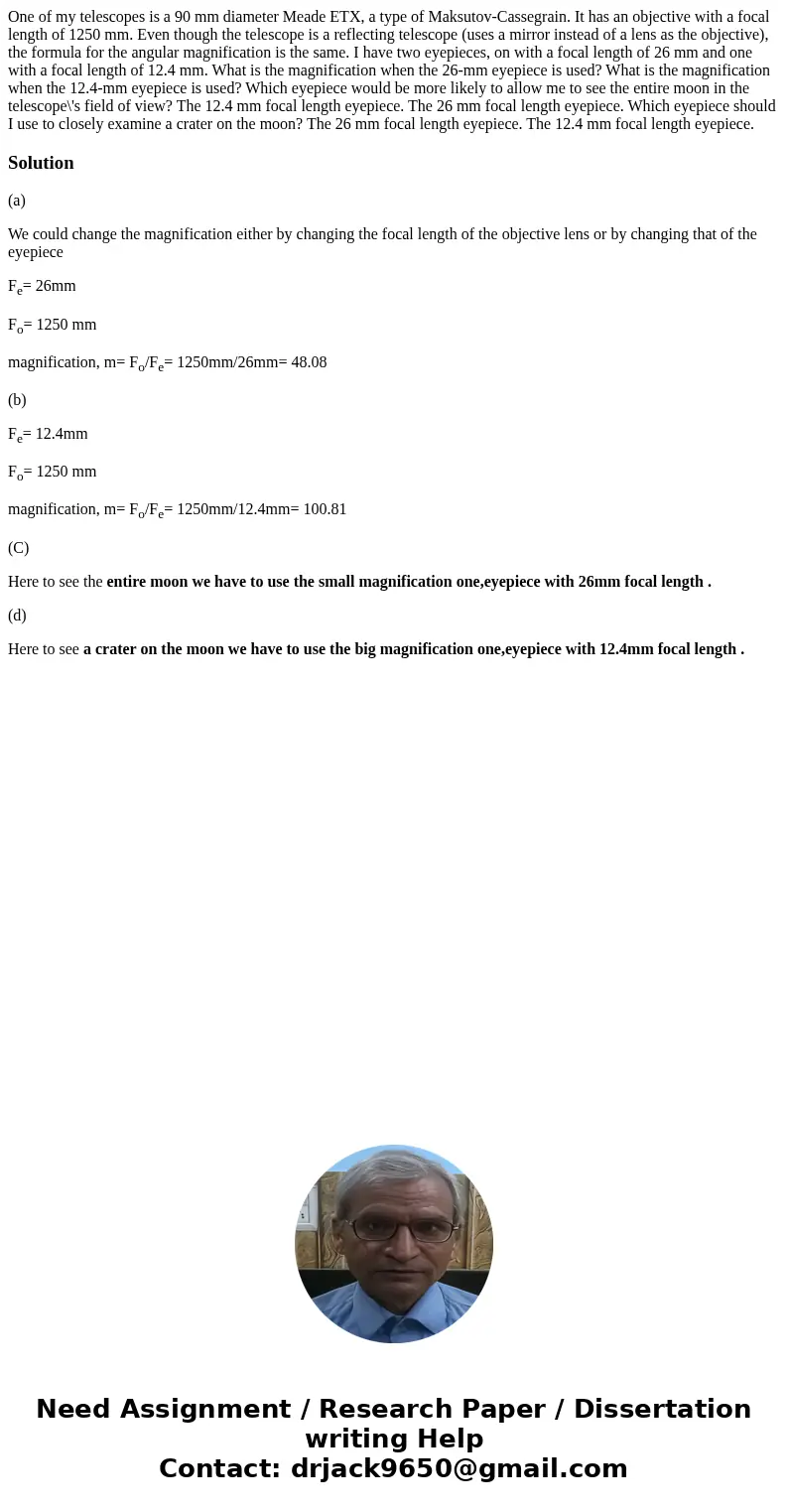One of my telescopes is a 90 mm diameter Meade ETX a type of
One of my telescopes is a 90 mm diameter Meade ETX, a type of Maksutov-Cassegrain. It has an objective with a focal length of 1250 mm. Even though the telescope is a reflecting telescope (uses a mirror instead of a lens as the objective), the formula for the angular magnification is the same. I have two eyepieces, on with a focal length of 26 mm and one with a focal length of 12.4 mm. What is the magnification when the 26-mm eyepiece is used? What is the magnification when the 12.4-mm eyepiece is used? Which eyepiece would be more likely to allow me to see the entire moon in the telescope\'s field of view? The 12.4 mm focal length eyepiece. The 26 mm focal length eyepiece. Which eyepiece should I use to closely examine a crater on the moon? The 26 mm focal length eyepiece. The 12.4 mm focal length eyepiece.
Solution
(a)
We could change the magnification either by changing the focal length of the objective lens or by changing that of the eyepiece
Fe= 26mm
Fo= 1250 mm
magnification, m= Fo/Fe= 1250mm/26mm= 48.08
(b)
Fe= 12.4mm
Fo= 1250 mm
magnification, m= Fo/Fe= 1250mm/12.4mm= 100.81
(C)
Here to see the entire moon we have to use the small magnification one,eyepiece with 26mm focal length .
(d)
Here to see a crater on the moon we have to use the big magnification one,eyepiece with 12.4mm focal length .

 Homework Sourse
Homework Sourse